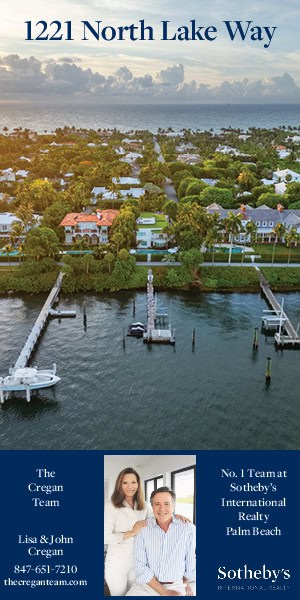There are many ways we can make the East End a more resilient community. Dr. Michael D. McDonald, Ph.D. shares with us some suggestions on how we can achieve this goal. Dr. McDonald is the coordinator of East End Resilience Network Initiative; and chairman of Oviar Global Resilience Systems, Inc.; and Executive Director of Health Initiatives Foundation, Inc.
What would being ‘resilient’ mean for the East End of Long Island?
You can think of resiliency as the opposite of being vulnerable. Resiliency increases with locally distributed resources and diverse capacities rather than centralized or concentrated resources, especially those that are imported into our community from afar. Improving resilience on the East End requires local resources like energy, food, water, communications and local job value chains to enable the East End to be more self-sufficient and function under stressful situations. Systems with single points of failure are not resilient and systems with many points of functionality that are redundant or which can replace the functions of the others are resilient.
What are the vulnerabilities faced by the residents of the East End?
In a time of rapid climate change, it is only a matter of time before the East End will face a catastrophic storm. We get our energy from up island over transmission lines that can blow down. Cell towers can blow down and cripple communications. Houston, Puerto Rico and Florida illustrate these central systems can be wiped out leaving millions of people stranded without basic services for days, weeks and months.
We have heavily developed coast lines and they are beginning to go through significant change. We continue to take farm land to develop houses reducing our ability to grow our own food. We have too many old and poorly functioning septic systems that are causing our harbors and bays to become toxic, killing our sea food and despoiling our most vital economic asset.
Our auto based transportation system adds to the climate challenge and the congestion reduces our quality of life.
Our economy is dependent on selling giant second homes that unduly add to the causes of climate change and other local environmental stresses. Most local businesses serve second home owners and other transient resort visitors who come here for the natural beauty and recreation. If this area was devastated by a big storm or we let our environment degrade too much it will hurt this type of economy.
What are the things we can do to make our homes and our community more resilient?
Increase adoption of energy efficiency technologies, wind power, battery storage and solar roofs. Add solar hot water and install ‘heat pumps’ for heating when your boiler needs to be replaced. A big step would be locally controlled ‘smart micro-grids’ which efficiently balance energy supply and use. The East End sends many millions of dollars out of the community to buy its energy. Local energy efficiency and renewable energy businesses can create local jobs that would keep that money in the community.
We should pursue ‘mesh communication networks’, currently used in military and disaster situations, where each cell phone or home or business communication hub becomes a relay to all other phones and hubs nearby. With mesh networks if one part of the system goes down there are lots of other sub-sets of the system that remain operational.
More local farms and family garden plots would help if food distribution was disrupted and growing your own helps defray high local food costs. This helps being economically resilient.
Public transportation and bike trails would make us more resilient because people can power bikes themselves and public transport moves more people per unit of money and energy.
What are things that residents of the East End can do to help or participate in being resilient?
Understand your ecological footprint and work to cut it in half. Europeans and Japanese on average, live with an ecological footprint that is half of the average American’s so it doesn’t mean reducing quality of life. Produce your own renewable energy. Don’t waste or buy too many things you don’t need. Buy things like local food that have a positive impact.
Communicate to your representatives you want policy’s that promote a sustainable future including local energy independence, sustainable agriculture and water quality.
Every way we can become more self-reliant and do more with less makes us stronger and more resilient.
The Hamptons can remain more resilient and sustainable than many other parts of the world, but only if our collective actions are resilient and sustainable.










![Big news in East End real estate! 🚨 @williamraveis has merged with Town & Country Real Estate, bringing together shared values and ambitious vision. Since 1974, William Raveis has built the largest family-owned brokerage in the Northeast, and now, with the expertise of @judidesiderio and Town & Country, the future of Hamptons real estate is stronger than ever. [link in bio]](https://hamptonsrealestateshowcase.com/wp-content/uploads/sb-instagram-feed-images/476759315_1782460569154569_6635216498348250105_nfull.webp)
![This stunning, modern home offers luxurious living on 1.17± acres with 7 spacious bedrooms and 9.5 elegant bathrooms; a rare opportunity to own an expansive, newly constructed, custom-built home in the Village of Southampton. All overflowing with natural light, 276 N Main Street is ideal for the Hamptons lifestyle. Represented by @aimeebarone of @brownharrisstevens. [link in bio]](https://hamptonsrealestateshowcase.com/wp-content/uploads/sb-instagram-feed-images/476101989_18490248829030135_2567439999744587554_nfull.webp)
![958 Cobb Road W is a striking 6,700± sq. ft. barn-style home that offers 5 bedrooms, 4 baths, a triple height great room with vaulted ceilings, stone fireplace, and dining room. The 3-season porch overlooks the pool while the expansive open lawn is perfect for entertaining al fresco. Represented by @beatemoore of @sothebysrealty. [link in bio]](https://hamptonsrealestateshowcase.com/wp-content/uploads/sb-instagram-feed-images/476095158_18490063498030135_410665094993156774_nfull.webp)
![More than 20 years after Academy Award-winning actor Sidney Poitier scooped up an apartment on Manhattan’s Upper East Side, the park-view duplex residence has popped back up for sale. On the market for $11.5M with @thecorcoangroup's @thechriskannteam. Poitier and his wife, Joanna, paid just $2.5M for the Fifth Avenue pad back in 1994. [link in bio]](https://hamptonsrealestateshowcase.com/wp-content/uploads/sb-instagram-feed-images/476133814_936508641994841_5390207071148792958_nfull.webp)
![Exciting news for coffee lovers! ☕️✨ @hamptoncoffee has just opened its 7th location in Hampton Bays! Swing by for your favorite brews, delicious bites, and that cozy Hamptons vibe. [link in bio]](https://hamptonsrealestateshowcase.com/wp-content/uploads/sb-instagram-feed-images/475911931_1008331407779975_5041581287369529436_nfull.webp)

![Introducing Goose Creek, a revitalized 14± acre waterfront estate nestled along 827± ft. of water frontage at 30 Mathews Road. Crafted in 2010 by the esteemed local builder Ben Krupinski and envisioned by the renowned architect Paul Rice, the grand 10,000± sq. ft. home blurs the lines between indoor and outdoor living. Contact @petrieteam of @compass with all rental inquiries. [link in bio]](https://hamptonsrealestateshowcase.com/wp-content/uploads/sb-instagram-feed-images/475679064_18489177286030135_5241008928583656401_nfull.webp)
